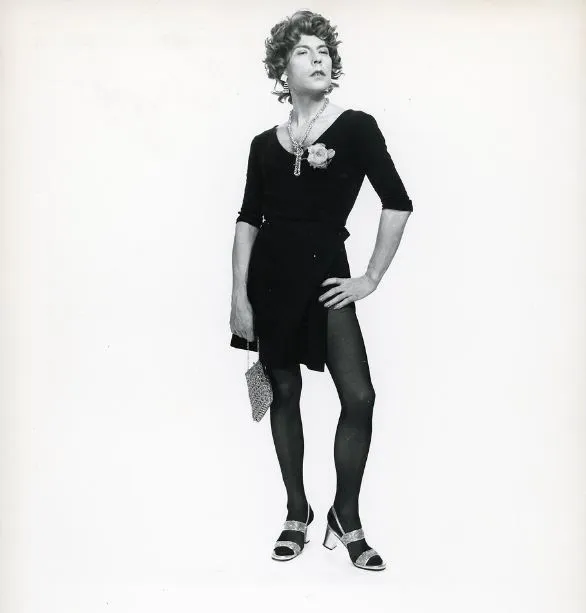
On Michel Journiac’s work
“This piece has become a cult work because in the 1970s, the debate on the status of women was really important. 24 heures de la vie d'une femme ordinaire reflects or highlights that debate.” Matthieu Humery
In what way is 24 heures de la vie d'une femme ordinaire [24 hours in the life of an ordinary woman] from 1974 by Michel Journiac a key or even cult piece of work?
This piece has become a cult work because in the 1970s, the debate on the status of women was really important. 24 heures de la vie d'une femme ordinaire reflects or highlights that debate.
This topic is reflected here but 24 heures de la vie d'une femme ordinaire addresses ordinary people as well. Michel Journiac makes use of the medium of the highly popular and widespread photo novel, which he mimics here.
The work has become iconic for two main reasons. Firstly, from an art history perspective, it contains a fairly obvious and important reference to Marcel Duchamp, who, in 1920, began to disguise himself or dress up as a woman. He invented a character called Rrose Selavy. Michel Journiac borrows this idea quite clearly. The work is also a cult piece because 24 heures de la vie d'une femme ordinaire borrows the codes of magazines. This ultimately paves the way for a rather different form of art that we find here in this exhibition, which is not really an exhibition on photography by photographers, but rather on performance photography.
Was this the first series on gender?
Probably, yes. This was one of the first series of its kind. Furthermore, Michel Journiac was not the photographer here. He asked someone else to take the pictures.
In other words, he uses photography to mark an event, to convey a message and to spread that message. He also uses the photograph as it had become very popular at that time, it could be seen everywhere, particularly in the pages of magazines. This was the era before Instagram, but photography was used in a different way to that prior to the 1960s. It’s quite a unique piece.
How was the series made?
The process of creating 24 heures de la vie d'une femme ordinaire was rather interesting because it consists of two sets of twelve. Therefore, it’s a diptych itself made up of several polyptychs: 24 prints, 24 photos taken at different times of the day.
In the first polyptych, we have a scenario. Dinner, lunch, supper, the husband coming home from work, etc. Here, we have a natural setting. It’s almost like a Claude Chabrol film. Then, on the other side, a bit like we find in magazines, we have a white backdrop and Journiac mimics a character. On the one hand, the artist recreates a form of fiction in a realistic or natural setting, and on the other hand, we have a neutral setting where a character is shown.
What is its place within this exhibition and how does it respond to or dialogue with other series?
The exhibition opens with this work. The importance of 24 heures de la vie d'une femme ordinaire in terms of the other works
on display is that it anticipates. It is a work that echoes the work that we see next. The same idea of appropriation can be found in the work of Cindy Sherman, Richard Prince and Sherrie Levine. This piece also coincides with another great oeuvre presented here: that of Martha Wilson.
How can we interpret this work today, over forty years since its creation?
The struggle is the same, although the form or questions are a little different. Ultimately, this struggle for the condition or for the improvement of the condition of women, is still present today. Another interesting aspect of this piece is that it creates a stage where one showcases oneself. This fully resonates with our contemporary society, completely driven by images, with apps like Instagram, where people constantly look at pictures. The culture of the self-portrait has become completely accepted. This idea of “socialized meat” spoken about by Michel Journiac, particularly in this work, makes it fully relevant today.
Which hour of these 24, do you prefer and why?
I prefer the lunchtime scene. This is the only time the ordinary housewife has to herself, for herself. It is the only time she can devote to herself and not to others, her husband, children, the laundry, or even in the other series where she plays the Cover Girl, for example.
Historically speaking, the abortion scene is very important. It is worth remembering that when Michel Journiac conceived and created this series in 1974, we were in the midst of the French presidential election campaign and one of Giscard’s great electoral promises at that time was to improve the condition of women and above all, to make abortion legal. It’s an important image and a very evocative one. It’s raw and crude, and perhaps difficult to watch. Despite the tragicomedy that runs through the whole of this composition, this image in particular, remains very harsh. It is difficult to look at and hard to imagine that it contains a more hidden meaning.